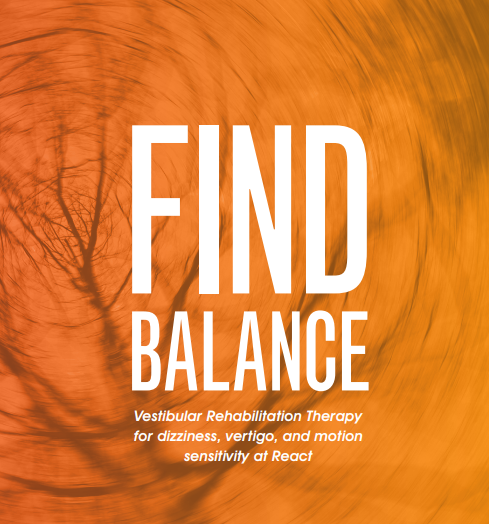Vestibular Rehabilitation Therapy (VRT)

What is Vestibular Rehabilitation Therapy?
Vestibular Rehabilitation Therapy (VRT) is a specialized form of rehabilitation to treat disorders that lead to imbalance, dizziness, vertigo, motion sensitivity, and visual disturbances. These unfortunate symptoms often lead individuals to adopt a more sedentary lifestyle to avoid aggravating their symptoms. Living a less active lifestyle may lead to even worse balance issues and decrease muscle strength and stamina creating a vicious cycle of reduced activity and poor quality of life.
⠀⠀⠀⠀⠀⠀⠀⠀⠀⠀⠀⠀
Vestibular therapy uses specific exercises to improve the efficiency of your balance centers in your inner ear and brain. Abnormal functioning in parts of your brain such as your cerebellum, inner ear, or visual cortex may lead to dizziness or instability. Exercises work by either enhancing existing neural mechanisms in the brain or teaching you to learn how to use new parts of your nervous system to complete a task due to a concept called neuroplasticity.
⠀⠀⠀⠀⠀⠀⠀⠀⠀⠀⠀⠀
Exercises may also involve balance training focusing on a basic day to day tasks that predispose someone to fall like transitioning from sitting to standing to complex exercises such as walking on uneven surfaces with your eyes closed. Exercises often involve head movements and visual retraining which is essential in stimulating and retraining the vestibular system and your eye’s ability to focus on a specific target. This training allows the brain to better understand where your body is positioned in space relative to its surroundings so you can move around in different environments without feeling dizzy or feeling fearful or falling.
Common Conditions Treated with VRT include:
•ACOUSTIC NEUROMA
•AGE-RELATED DIZZINESS AND IMBALANCE
•BENIGN PAROXYSMAL POSITIONAL VERTIGO (BPPV)
•CERVICOGENIC DIZZINESS
•HEADACHES/MIGRAINES
•LABYRINTHITIS AND VESTIBULAR NEURITIS
•MAL DE DÉBARQUEMENT
•MÉNIÈRE’S DISEASE
•POST CONCUSSION SYNDROME
-Kevin Martin, PT, DPT (Lakeshore East)
